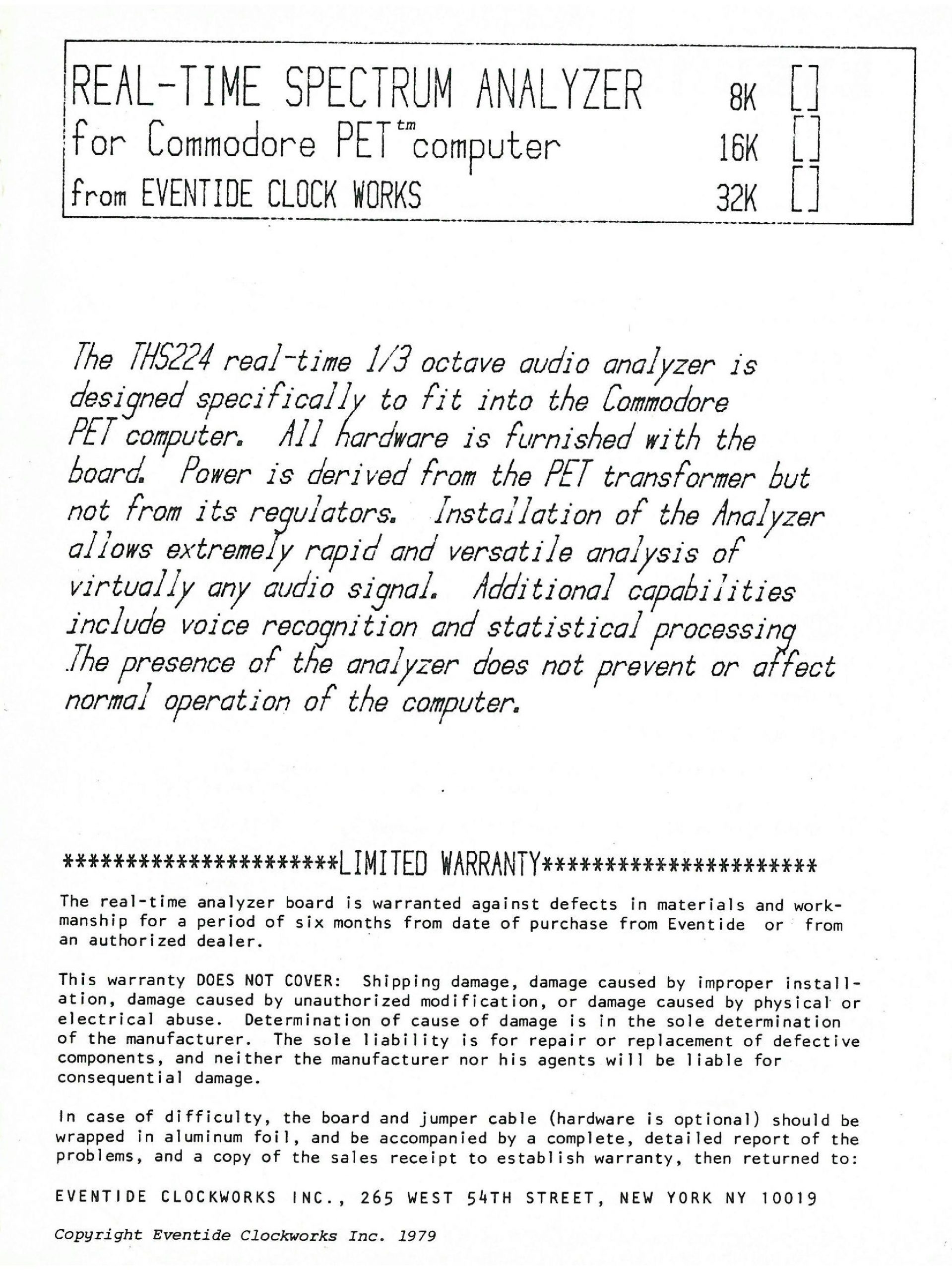Before Eventide’s Realtime Spectrum Analyzer was released, spectrum analysis instruments were a bulky and expensive investment. The Spectrum Analyzer for the Commodore PET, also known as the THS-224, was a bolt-in card that turned the computer into a scientific instrument that measured the levels of 31 one-third octave bands. Not only was it affordable, it also made Eventide the first to turn a computer into a test instrument.
A Realtime Spectrum Analyzer is described as analyzing components of interest in the input signal continuously, provideing information in usable form. Contrasting to a Swept Filter Analyzer, which was only able to analyze one frequency at any given time.
The Realtime Spectrum Analyzer was designed for use in the broadcast, recording, music, and environmental noise analysis fields and was also able to be employed in speech and hearing analysis and therapy. The system was mainly used by loudspeaker manufacturers to develop and test their products, by vocal coaches for timbre visualization, and by many hi-fi enthusiasts.
Initially released for the Commodore PET, later Realtime Spectrum Analyzer models were released for Apple II and the Radio Shack TRS-80.

The Eventide AIB232 Spectrum Analyzer and the Apple II provided a full range of audio spectrum analysis functions and was compatible with Apple II and Apple II+ computers running either Integer Basic or Applesoft Basic. The package required an Eventide AIB232 Spectrum Analyzer installed in any slot but zero, 48K bytes of RAM, an Apple Disk II running under Apple DOS, and a TV or video monitor.
The Eventide VTU02 Spectrum Analyzer was introduced for the Radio Shack TRS-80 and plugged into the TES-80 expansion port, also offering an equivalent port for further expansion.
The VTU02 and AIB232 Spectrum Analyzers divided the audio spectrum from 20 Hz to 20 kHz into 31 third-octave bands and dispalys these bands with their relative amplitudes on the computer CRT. The units could be used for measuring sound and noise levels, for optimizing the equalization of a hi-fi or public address system, for checking the frequency response of audio components and for speech and sound pattern recognition, useful for voice control systems.
The capabitlities of the computers allowed for great flexibility in the manipulation of the analyzed data. Data could be stored and compared with past, future and other channel information. Programs to access the analyzer were written in BASIC and three provided with each unit, Interative Operation, Minimal Operation and Self Test.
Documentation




